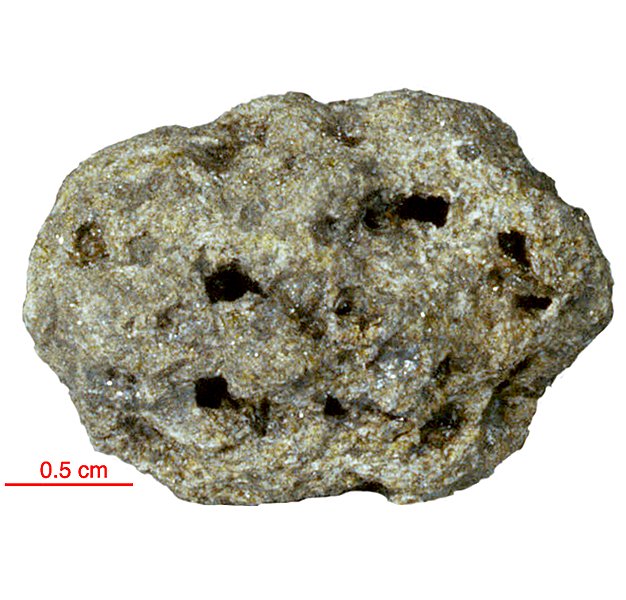
Fact sheet
15661 was collected as a rake sample. It is vesicular, vuggy and has a few olivine phenocrysts; typical of olivine-normative basalts. 15661 is a fine- to medium-grained microgabbroic mare basalt with about 60% pyroxene. Rare olivine phenocrysts reach about 1.5mm, are anhedral (see rotation 2), and contain crystallized silicate melt inclusions. Most pyroxene and olivine crystals are less than 0.5mm across. Pyroxene and olivine tend to be granular and the plagioclase feldspar forms subhedral hollow laths. A few variolitic areas are present. Chromite forms cores to some ulvospinel. Cristobalite, fayalite, ilmenite, troilite and some glass is also present. Rotation 1 shows an interstitial melt pocket.
The sample weighed 5.9 grams before analysis and has not been dated.
Further details of this and other Apollo samples are here: http://curator.jsc.nasa.gov/lunar/
The Apollo 15 landing site was in the Apennine Highlands, and close to Hadley Rille — a long, narrow winding valley. Approximately 76 kg of lunar material, including soil, rock, core-tube and deep-core samples, were returned to Earth.
This mission was the first flight of the Lunar Roving Vehicle which allowed the astronauts to venture further from the Lunar Module than in previous missions. During three periods of extravehicular activity, or EVA, on July 31st, and August 1st and 2nd, Scott and Irwin completed a record 18 hours, 37 minutes of exploration, travelling 17.5 miles, in the first car that humans had ever driven on the Moon.
Apollo 15 was launched on 26 July 1971.






